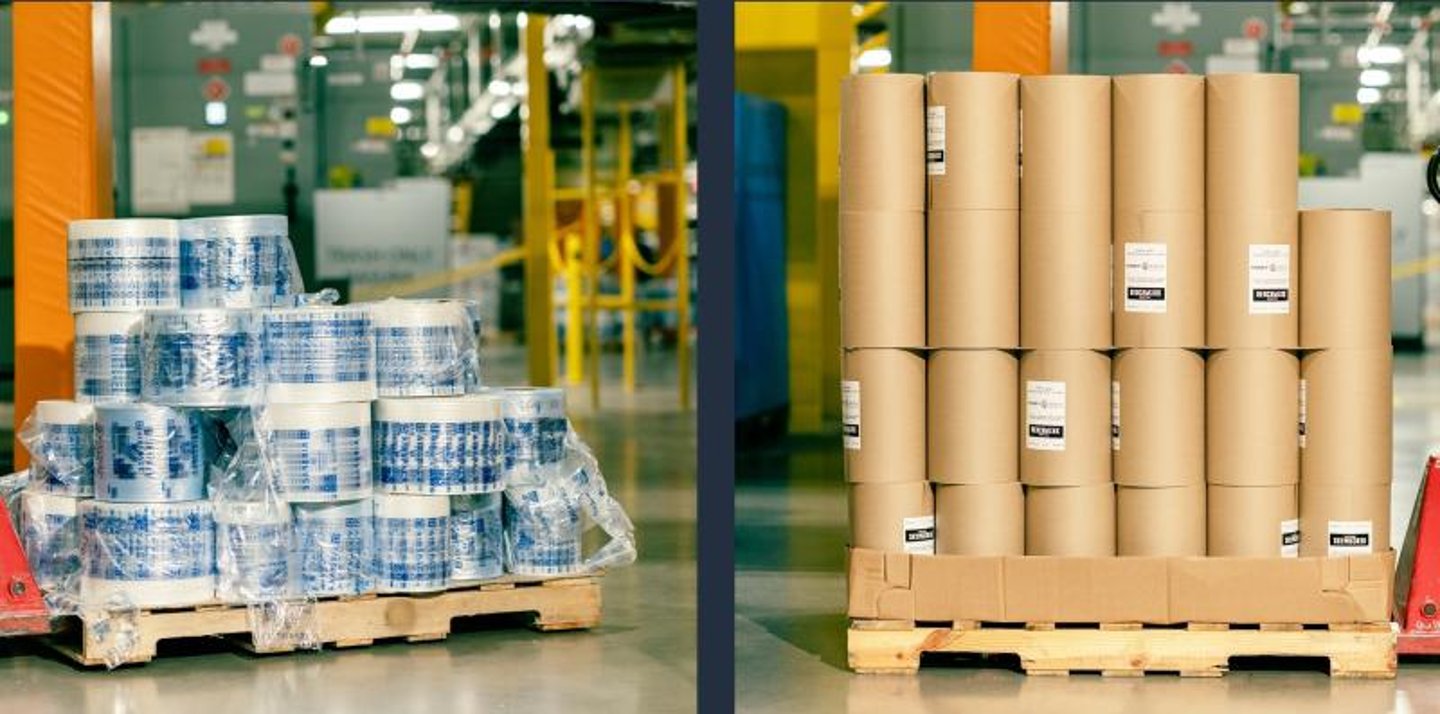Amazon goes (almost) all in on paper packaging for delivery
The “paper versus plastic” question has taken on new meaning in recent years, moving beyond shopper choice at checkout to the shift to more sustainable materials. Amazon is making a big change in the paper versus plastic e-commerce arena, announcing this week that it has replaced 95% of plastic air pillows used for delivery packaging with filler paper.
According to the retail company, this milestone represents Amazon’s largest packaging reduction effort in North America and marks a significant step in its efforts to “avoid and reduce” packaging. By using paper packaging for most orders, the e-comm business will avoid the use of nearly 15 billion plastic air pillows annually. Amazon also emphasized that the recyclable paper filler delivers the same, if not better, product protection than air pillows.
The change has been in the works for a while. Last fall, Amazon opened its first automated fulfillment center in Ohio that eliminated plastic packaging for delivery, where it was able to test and learn and transition to paper filler across most of its shipments in under a year. Over the past several months, thousands of employees and supplier partners worked to source paper filler, update machinery and train employees on the new systems.
“I’m proud of the cross-Amazon collaboration to make a positive impact on the customer delivery experience with easier to recycle materials. It’s a great example of how we thoughtfully test and scale new solutions to protect our customer experience,” said Pat Lindner, Amazon’s VP of mechatronics and sustainable packaging. “We are working towards full removal in North America by end of year and will continue to innovate, test, and scale in order to prioritize curbside recyclable materials.”
The switchover to paper filler is one example of the e-commerce giant’s efforts to curb package waste. Concurrently, Amazon is working with partners, including the U.S. Department of Energy, to develop new materials and recycling solutions. The company is also piloting a technology with AI and robotics firm Glacier to automate the sorting of recyclables and gather real-time data on recycling streams.
This article was first published on sister site Progressive Grocer.



